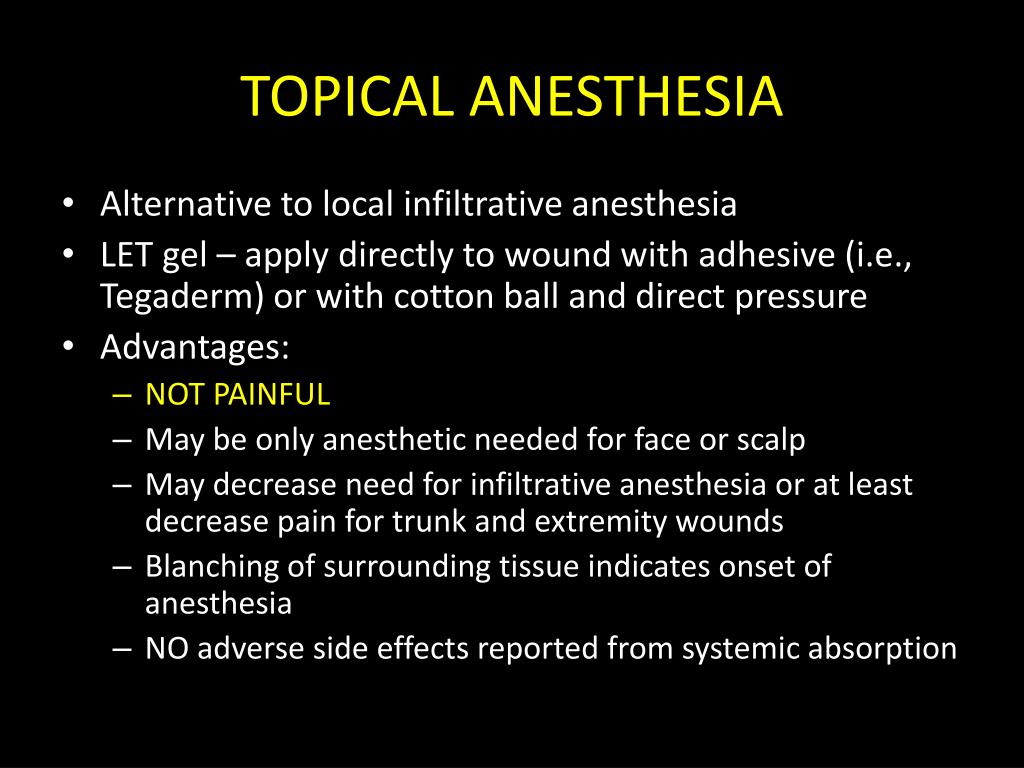

In adults, predictive risk factors include: female gender, non-smoker, history of PONV or motion sickness, surgery duration > 60 minutes and use of post-operative opioids. Two scoring systems have been developed, one each for adults and children, to try to identify those patients at higher risk of developing PONV, thus allowing anesthesiologists to decide who may benefit from prophylactic therapies. While the physiology of PONV is complex and not well understood, some risk factors and triggering agents have been identified. It is one of the most common side effects of anesthesia, occurring in up to 30% of all post-operative patients, and a leading cause for patient dissatisfaction after anesthesia. Post-operative nausea and vomiting or PONV is any nausea, vomiting or retching in the first 24-48 hours following surgery. Post-operative Nausea and Vomiting (PONV) Nerve injury secondary to body positioning Lacerations (cuts) to the lips, tongue, gums, throat The following are possible complications of general anesthesia: Those who do suffer side-effects or complications typically have mild, transient symptoms that are easily managed. Most healthy people tolerate general anesthesia without issue. Complications are more closely related to the surgical procedure and a patient’s general health. The risk of long-term complications, including death, from anesthesia itself is very small. The specific risks of anesthesia vary with the kind of anesthesia, type of surgery (elective or emergent), and patient specific factors, including age and pre-existing medical conditions. While anesthesia today is the safest it has ever been, even for the sickest patients, its administration is not without risks. The introduction of anesthesia for surgical procedures was a monumental discovery and has allowed for necessary procedures to be performed in a humane, controlled and comfortable manner. FAQ – Frequently Asked Questions – Office-based Anesthesia.Airway Management for General Anesthesia.FAQ – Frequently Asked Questions for Sedation Dentistry.Preanesthesia Instructions For Sedation Dentistry.Anesthesia for Pediatric Dental Surgery – Surgery Center.FAQ – Frequently Asked Questions in Pediatric Anesthesia.Use of therapeutic caffeine in acute care postoperative and critical care settings: a scoping review.

Health Check: Why can you feel groggy days after an operation?īright M, Raman V, Laupland KB. Major incidents and complications in otherwise healthy patients undergoing elective procedures: Results based on 1.37 million anaesthetic procedures. Anesthesia awareness (waking up) during surgery. Preventing blood clots after orthopaedic surgery.Īmerican Society of Anesthesiologists.

Acute intraoperative pulmonary aspiration. Management of the difficult-to-wean adult patient in the intensive care unit. Magnesium can decrease postoperative physiological ileus and postoperative pain in major non laparoscopic gastrointestinal surgeries: A randomized controlled trial. Shariat Moharari R, Motalebi M, Najafi A, et al. doi:10.1001/archoto.2011.1427Īmerican Society of Anesthesiologists. Adverse laryngeal effects following short-term general anesthesia.


 0 kommentar(er)
0 kommentar(er)
